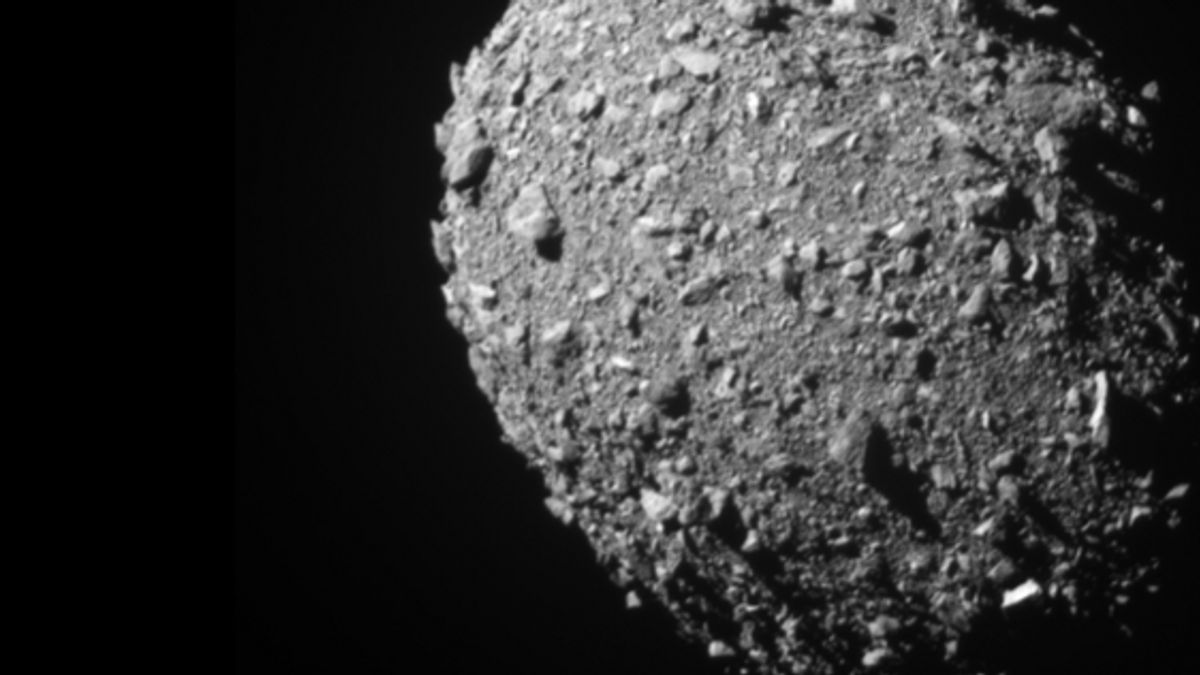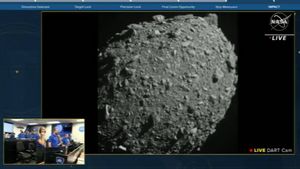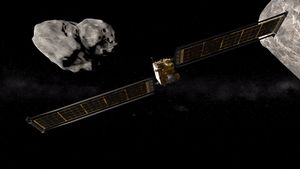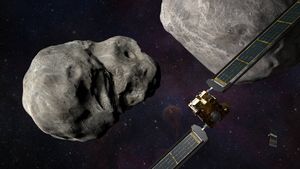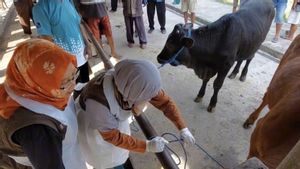JAKARTA - After 10 months of flying in space, NASA's Double Asteroid Redirection Test (DART) aircraft finally managed to hit its target asteroid Dimorphos on September 27.
The success of this mission indicates that the DART aircraft is able to protect Earth from asteroids or comets that will harm the Earth later.
"At its core, DART represents an unprecedented success for planetary defense, but is also a unified mission with tangible benefits for all of humanity," said NASA Administrator Bill Nelson.
"As NASA studies the cosmos and our home planet, we also work to protect that home, and this international collaboration turns science fiction into science fact, showing one way to protect Earth."
SEE ALSO:
For more details, here are the facts about the DART mission and its success in crashing into the asteroid Dimorphos, quoted from various sources, Wednesday, September 28.
1. DART was the first mission to attempt to direct the path of an asteroid by crashing a spacecraft into it and deflecting it, a technique known as kinetic impact.
The mission is part of NASA's planetary defense strategy and aims to build capabilities, model, predict and prepare for an asteroid that might pose a threat to Earth.
2. DART was designed and built by a team at the Johns Hopkins Applied Physics Laboratory (APL) in Maryland, United States. The main structure is a cube about 1 square meter wide equipped with large and flexible solar arrays on opposite sides that span about 8 meters each. It has a mass of about 610 kilograms.
The spacecraft is powered by NEXT–C, NASA's Evolutionary Xenon Thruster–Commercial, a solar-powered ion propulsion system that generates thrust using xenon as fuel.
3. DART was launched on a SpaceX Falcon 9 rocket from Vandenberg Space Force Base in California on November 23, 2021 and crashed into an asteroid on September 27, 2022.
4. The DART target is a binary asteroid system consisting of a larger asteroid named Didymos, which in Greek means twin, and a smaller companion asteroid named Dimorphos, which in Greek is two forms. The asteroid orbits it approximately every 12 hours. Didymos is about 780 meters wide and Dimorphos is about 160 meters.
5. DART collided with Dimorphos when it was about 11 million km from Earth. At the time of impact, it was estimated to be traveling at a speed of about 6.6 km/s.
6. Minutes before the collision, the DART craft showed stunning detail of the space rock's uneven surface, all in dark gray. It wasn't long before a speeding DART hit the Dimorphos until the display on the camera disappeared.
7. DART is equipped with a high resolution Didymos Reconnaissance camera and an Asteroid Camera (DRACO) for Optical navigation. Besides being used to support navigation, this camera is also used to measure the size and shape of the target asteroid in order to investigate the geology of the impact site. Images obtained by DRACO before the kinetic collision are streamed back to Earth in real time.
In the last four hours before the collision Small-body Maneuvering Autonomous Real Time Navigation (SMART Nav), worked with DRACO to autonomously steer the spacecraft into the impact position.
8. The spacecraft also carried a companion CubeSat named LICIACube (Light Italian CubeSat for Asteroid Imaging) designed by Agenzia Spaziale Italiana (ASI). LICIACube was deployed on September 11 during the spacecraft's approach to Dimorphos and captured images of the impact.
9. After the successful crash, the NASA investigation team will now observe Dimorphos using ground-based telescopes to confirm that the DART impact changed the asteroid's orbit around Didymos.
The researchers estimate the impact would shorten Dimorphos' orbit by about 1 percent, or roughly 10 minutes, precisely measuring how much the asteroid was deflected is one of the main goals of the full-scale test.
10. In the coming weeks, the team will characterize the resulting ejecta and precisely measure Dimorphos' orbital changes to determine how effectively DART deflects the asteroid.
The results will help validate and improve scientific computer models that are important for predicting the effectiveness of this technique as a reliable method for asteroid deflection.
The English, Chinese, Japanese, Arabic, and French versions are automatically generated by the AI. So there may still be inaccuracies in translating, please always see Indonesian as our main language. (system supported by DigitalSiber.id)
